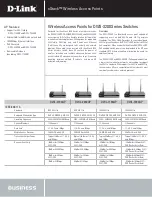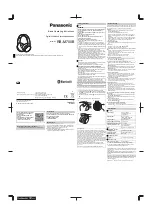
Chengdu Ebyte Electronic Technology Co., Ltd.
E22-230T22S User manual
Copyright ©2012–2020,Chengdu Ebyte Electronic Technology Co.,Ltd.
20
00:22dbm(default)
01:17dbm
10:13dbm
11:10dbm
WOR transmitting mode to read the register.
Register 0x00: Current ambient noise rssi
Register 0X01: rssi when the data was
received last time.
(Current channel noise is: dBm =-(256-HEX))
Command format: C0 C1 C2 C3 + starting
a read length
Returns: C1 + a read read valid
value
E.g: send C0 C1 C2 C3 00 01
Return C1 00 01 rssi
(Address can only start from 00)
----------------------------------
Power and current are nonlinear, and power
efficiency is highest at maximum power.
The current does not decrease in proportion
to the decrease in power.
05H
Read/
Write
REG2
Channel control(CH)
0-64 represents a total of 65 channels
Frequency= 220.125 + CH *0.25M
06H
Read/
Write
REG3
7
Enable RSSI
1:Enable
0:Disable(default)
--------------------------------------
6,
Fixed point transmission
1:Fixed point transmission mode
0 : Transparent transmission
mode(default)
---------------------------------------
5
Enable reply
1:Enable repeater function
0:Disable repeater function
--------------------------------------
4
LBT enable byte (monitor before
transmission)
1:Enable
0:Disable(default)
--------------------------------------
When enabled, the module receives wireless
data and it will follow an RSSI strength byte
after output via the serial port TXD
.---------------------------------------
The module recognizes the first three bytes
of the serial data as: address high + address
low + channel and takes it as the wireless
transmitting target.
---------------------------------------
After the reply function is enabled, if the
target address is not the module itself, the
module will forward it once.
In order to prevent data return-back, it is
recommended to use it in conjunction with
the fixed point mode. That is: the target
address is different from the source address.
----------------------------------------
When enabled, wireless data will be
monitored before it is transmitted, which can
avoid interference to a certain extent, but
may cause data delay.
----------------------------------------











































